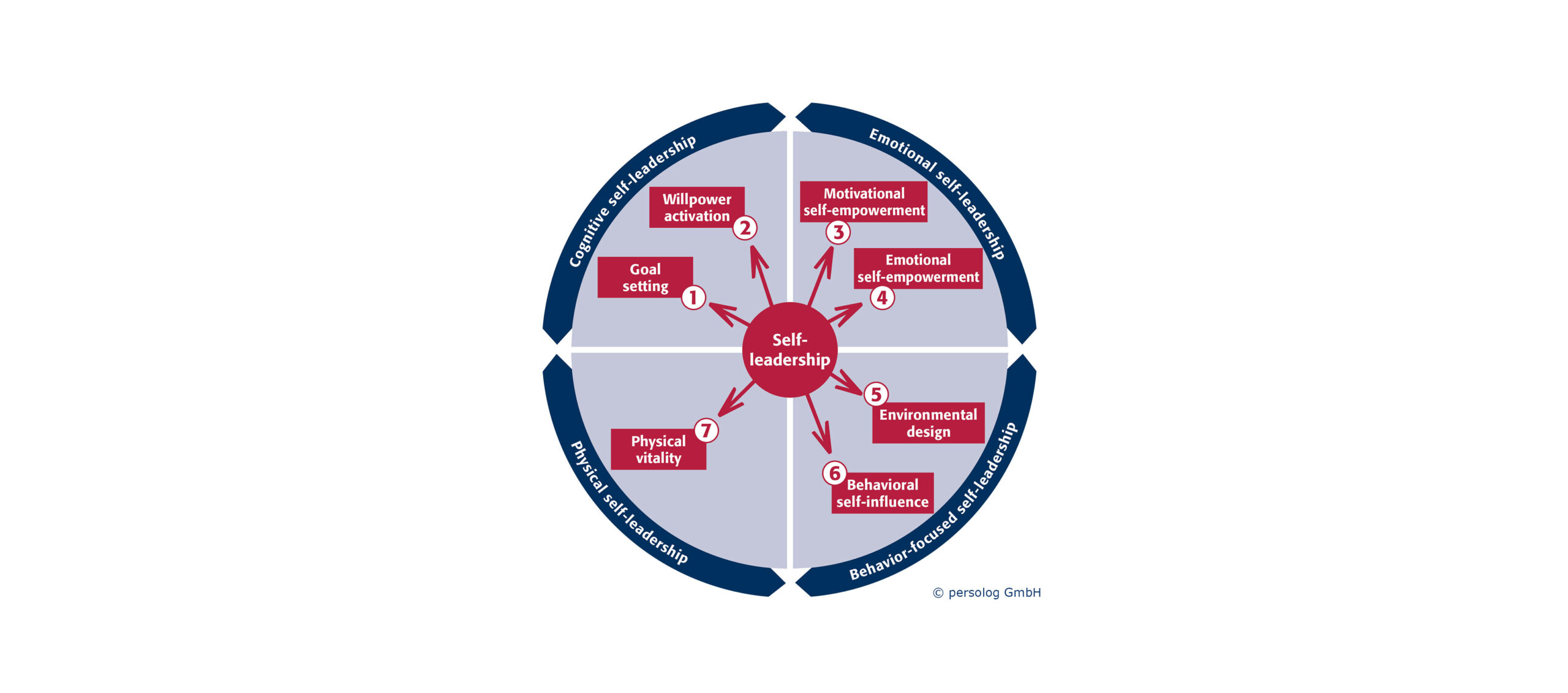Who leads themselves, lives autonomously. They align their thoughts, feelings, and actions with their personal goals. They change and develop them. What they need for this are competencies in the four dimensions of self-leadership.
The Four Dimensions of Self-Leadership
Not only in leaders, but almost everywhere, the demands placed on us are increasing. With old habits of thought and behavior, we can no longer meet them. We merely execute tasks instead of fulfilling and shaping them. What we lack are strategies to help us not lose sight of our personal goals and needs. To develop these, we must address the issue of self-leadership. There are four essential competency dimensions in self-leadership.
1. Dimension: Cognitive Self-Leadership
Cognitive self-leadership is based on the conscious examination of underlying personal goals in both professional and private contexts. Many situations that initially seem to hinder us from achieving our goals almost always have components that contribute to our goals. Tasks then become less of a burden or annoying obligation but rather a step toward personal goal attainment.
To build competence in this dimension of self-leadership, strategies to overcome existing mental blocks, break thought patterns, successful goal-setting strategies, and strategies for willpower control are suitable.
2. Dimension: Emotional Self-Leadership
Tasks trigger strong or less intense emotions in us, influencing task execution. For example, negative emotions can be demotivating. Emotional self-leadership aims to strengthen motivation by associating positive emotions or events with the task, consciously reliving them, or envisioning them in the future.
To build competence in this dimension of self-leadership, motivation control and emotional regulation are suitable.
3. Dimension: Behavior-Focused Self-Leadership
Just as thought patterns have gradually become ingrained in us, so too have behavioral patterns. While these behaviors may be suitable for coping with situations, they are not necessarily geared toward effectively and sustainably mastering them. This becomes particularly apparent in difficult situations, where misconduct can occur quickly because the consequences of behavioral alternatives are not weighed against each other.
To build competence in this dimension of self-leadership, strategies for effective environment shaping and behavior adaptation are necessary.
4. Dimension: Physical Self-Leadership
Our body forms the basis for effective action. Therefore, dealing with it must be part of successful self-leadership. Relaxation and breathing techniques, exercise, and nutrition are the three main components here.
To build competence in this dimension of self-leadership, building conscious vitality management is recommended.
There’s more to discover about self-leadership:
In this free webinar, Debora Karsch will give you 7 principles to advance your training business. Benefit from Debora’s experience as an entrepreneur, trainer, and CEO of persolog.



